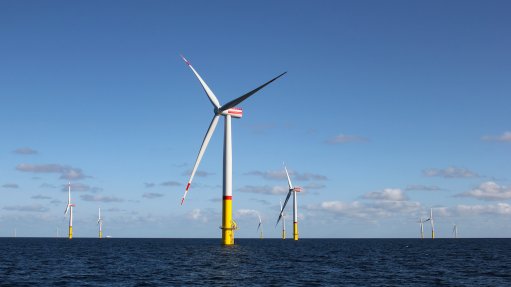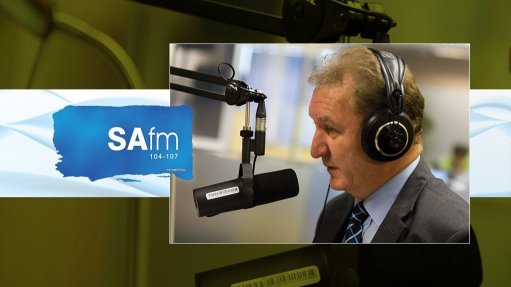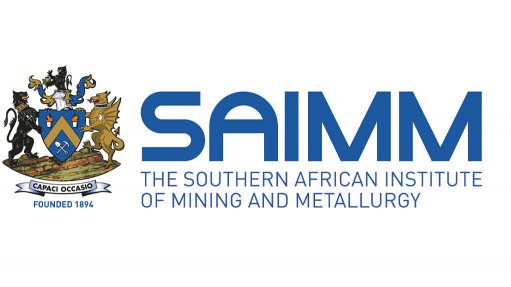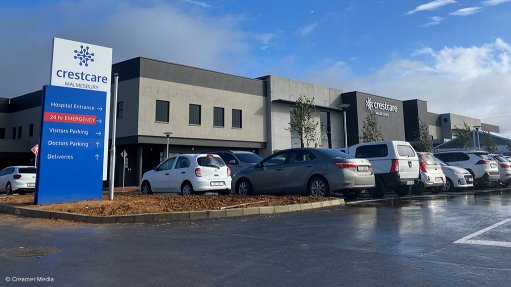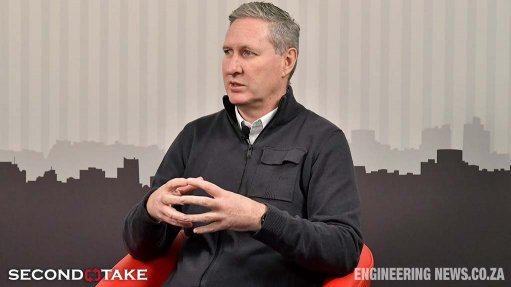Iranian cracker on target
This follows Sasol Polymers’ successful investment in an ethy- lene plant and a downstream poly-thene plant in Malaysia, which started production last year.
The Iranian project is a 50:50 joint venture (JV) between Sasol Polymers and Iran’s State-owned National Petroleum Company (NPC), while the Malaysian ventures were a three-way JV between Sasol Polymers (40%), Sasol Petronas (40%) and Sabic Europetrochemicals (20%).
The million-ton-a-year-capacity cracker in Iran will supply feedstock to a 300 000 t/y LDPE plant and 300 000 t/y of HDPE plant that make up the complete Iranian project.
Construction of the cracker is on target to be completed in 2005 and the LDPE and HDPE plants in 2006.
The French company Technip-Coflexip is building the LDPE plant and the German company Krupp Uhde the HDPE plant.
NPC is the owner of the gasfield, which will supply the natural gas for the plants under construction.
As Fourie points out, Sasol had a business relationship with Iran many years ago, the Iranian government being one of the initiators in the original establishment of the Natref crude-oil refinery in Sasolburg, now owned jointly by Sasol and the French petroleum company, Total.
Ethane remains the world’s lowest-cost feedstock, which is why the decision was taken to produce LDPE and HDPE based on ethane as a feedstock, in what is Sasol’s second project under way in the Middle East, the other being the large and highly-significant R5,2-billion gas-to-liquids (GTL) project in Qatar, which is due for commissioning in 2005.
In Qatar, Sasol Petroleum International is in 49% partnership with the State-owned Qatar Petroleum, which is also the owner of a huge offshore gas reserve that is providing the methane-rich natural gas for the historic GTL project, also being managed by Technip-Coflexip.
Meanwhile, Fourie tells Engineering News that the scheduled production of ethylene and propylene in the Middle East during 2005 and 2006 will overlap with a similar kind of initiative in South Africa.
This is because Sasol Polymers is currently also looking at substantially increasing its South African output of LDPE at Sasolburg and polypropylene at Secunda, in projects linked to the statutory requirement to produce unleaded petrol in South Africa from January 1, 2006.
From that date, all petrol is to be lead-free and the sulphur level in diesel reduced.
To do this, the Sasol Synfuel assets will have to be reconfigured to make unleaded petrol.
Fortuitous for Sasol is the fact that its synthetic diesel is already free of sulphur, as there may be no sulphur in Fischer-Tropsch (FT) products as sulphur poisons the FT catalysts.
All the diesel produced in Secunda is virtually sulphur-free.
Sasol Synfuels is also in the fortunate position of being able to use its unique flowsheet to develop an unleaded fuels solution, while at the same time unleashing a wealth-creating opportunity to produce additional ethylene and propylene for polyethylene and polypropylene manufacture and further propylene derivatives.
This proposed project, which comprises modifications to synfuels and investment in chemicals and polymers, has moved into the phase of basic engineering in order to firm up expected capital costs, so that the Sasol board can consider these in September 2003.
Currently, capital is estimated to be a billion dollars.
The project would comprise multiple refinery unit changes and some new refinery units, a large propylene extraction unit and inte-gration with existing ethylene units.
The additional ethylene production would allow for a rationalisation of assets in the polyethylene business unit of Sasol Polymers, resulting in a new world-scale tubular LDPE plant, using Exxon-Mobil technology, and the additional propylene in a new world-scale polypropylene plant, using BP technology, Fourie tells Engineering News.
To make unleaded fuel, octane has to be obtained from a source other than lead, owing, of course, to lead having to be removed from 2006.
As the low-value olefins in Sasol’s synthetic petrol dilute the octane level, lead is traditionally used to enhance the octane level, which is why the petrol contains lead.
With lead now having to be eliminated, the high octane will be retained by the removal of the low-value olefins out of the process, Fourie explains.
The removed C4-to-C8 olefins will be redirected for cracking, using the new selective chemical cracker (SCC) technology, which is expected to require a large investment in the region of R7-billion.
The SCC will provide the ethylene, propylene, liquefied petroleum gas and a branched olefins needed for octane in fuel.
Branched components not needed, will be blended back into the fuel.
“This will be the first time ever this technology will be used on gaseous components,” Fourie reports.
Sasol already has DualFuel, which is unleaded fuel that can be used in both newer cars that require unleaded petrol and older cars that require leaded fuel.
This fuel, which will continue to be produced even after all fuel is unleaded, has been making market inroads, along with Turbo Diesel, with very low sulphur, far less than even the new diesel specification of 300 parts per million, which is to be enforced in South Africa from 2006.
It is against the background of these great comparative advantages that Sasol is rolling out its GTL technology at pace, because its low-temperature FT technology allows it to produce a sulphur-free diesel with a high cetane of between 65 and 75, compared with the traditional 50 in crude-derived diesel.
This is a significant advantage as, if sulphur is removed from traditional crude-oil-derived diesel, in the normal course of events there is a loss of cetane value, whereas cetane remains at high levels in the FT-derived diesel, which can be used as a blending agent.
As a result, diesel from Natref can be blended with synthetically-produced diesel from Secunda, as has been done in the past.
A study is under way in connection with the revamping of the Natref refinery in Sasolburg in order to remove sulphur from the diesel it produces from crude oil.
The Natref refinery would have to be reconfigured to produce low-sulphur diesel in order to comply with the new government regulations.
While it is not a great challenge for crude-oil refineries like Natref to produce unleaded fuel, considerable investment in hydrogenation capacity is required to convert the sulphur to H2S so that sulphur can be removed from diesel, which is why Sasol may opt for blending Secunda diesel with Natref diesel to a point where it conforms.
Natref is still, however, weighing up its options. Meanwhile, Sasolburg’s position as South Africa’s ethylene and polyethylene centre will be augmented by the steps taken to meet new government regulations.
Sasolburg is already the location of LDPE and LDP plants, as well as warehouses that form the heart of an existing logistics chain for polymers.
This existing strength will thus be built upon.
Further investment in Sasolburg will also counter the possible loss of jobs owing to Sasol Chemical Industries’ conversion from coal to natural gas in May next year.
Just as Sasolburg is the ethylene centre, Secunda is the polypropylene hub, being the site of the existing world-scale synfuels plant, as well as silos, warehouses and logistics infrastructure for the production and distribution of polypropylene.
Comments
Press Office
Announcements
What's On
Subscribe to improve your user experience...
Option 1 (equivalent of R125 a month):
Receive a weekly copy of Creamer Media's Engineering News & Mining Weekly magazine
(print copy for those in South Africa and e-magazine for those outside of South Africa)
Receive daily email newsletters
Access to full search results
Access archive of magazine back copies
Access to Projects in Progress
Access to ONE Research Report of your choice in PDF format
Option 2 (equivalent of R375 a month):
All benefits from Option 1
PLUS
Access to Creamer Media's Research Channel Africa for ALL Research Reports, in PDF format, on various industrial and mining sectors
including Electricity; Water; Energy Transition; Hydrogen; Roads, Rail and Ports; Coal; Gold; Platinum; Battery Metals; etc.
Already a subscriber?
Forgotten your password?
Receive weekly copy of Creamer Media's Engineering News & Mining Weekly magazine (print copy for those in South Africa and e-magazine for those outside of South Africa)
➕
Recieve daily email newsletters
➕
Access to full search results
➕
Access archive of magazine back copies
➕
Access to Projects in Progress
➕
Access to ONE Research Report of your choice in PDF format
RESEARCH CHANNEL AFRICA
R4500 (equivalent of R375 a month)
SUBSCRIBEAll benefits from Option 1
➕
Access to Creamer Media's Research Channel Africa for ALL Research Reports on various industrial and mining sectors, in PDF format, including on:
Electricity
➕
Water
➕
Energy Transition
➕
Hydrogen
➕
Roads, Rail and Ports
➕
Coal
➕
Gold
➕
Platinum
➕
Battery Metals
➕
etc.
Receive all benefits from Option 1 or Option 2 delivered to numerous people at your company
➕
Multiple User names and Passwords for simultaneous log-ins
➕
Intranet integration access to all in your organisation







